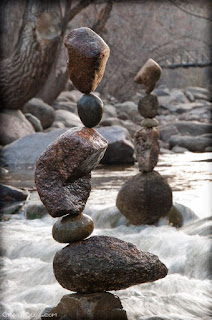Patrick S asked me to write a blog post about the Holodeck. This spurred me to think about tertiary realities in general.
What I mean by a tertiary reality is a subreality within fiction.
Star Trek characters visit the Holodeck. A character in a novel has a dream or hallucination. Somebody in a film tells a story. And so on. In other words, something which is fictional or illusory taking place in an already fictional narrative (the secondary reality).
Tertiary realities are useful for doing various things. They can give an insight into the psychology of the characters or foreshadow an important event (think of the dream sequences in
American Beauty, or Luke's imaginary duel with Darth Vader in
The Empire Strikes Back). They can provide a space in which characters can develop outside of the normal framework in which we're used to seeing them (lots of
Star Trek Holodeck scenes are like this - the one which springs to mind right now is "The Emissary", in which a "calisthenics" program provides the opportunity for us to see, er, a progression in the relationship Worf and Kehleyr). Or they can just be a cheap but possibly effective trick in which the viewer
thinks they're seeing something purportedly "real", but it turns out they're not (the aforementioned scene in
The Empire Strikes Back is an example of this, obviously - I guess
Dallas is the most famous extended one in history).
What they are not particularly good at is provoking a sense of threat. If the viewer knows something is just a dream, or just a story-within-a-story, or just a holographic projection, it's hard to get interested unless there is known to be some impact on the "real" world - that is, the secondary reality. This is why filmmakers try to keep the "it was all just a dream - or was it?" motif hidden until the end (a la
Labyrinth, or indeed
Dallas), or make it clear that what is happening in the tertiary reality will have serious effects in the secondary one - like all those
Next Gen episodes in which Something On the Holodeck Becomes Sentient and Tries to Take Over the
Enterprise (or whatever). There is also a very narrow middle ground in which it's possible to communicate to an audience or reader that what they are experiencing
might be a dream and
might not - a lot of David Lynch's films do this, for example, as I suppose does
Inception at the end. But in the main a tertiary reality only generates emotional investment if there is something about it that means something in the "real world".
(
Inception is an interesting case inasmuch as it proves the general point that if it's clear what's happening is in a tertiary reality, the audience doesn't really care. There's no sense of danger at all in the action sequences in
Inception in which the characters are mucking around in interior dreamscapes and fighting off the weightless ciphers they encounter there. It's only when something else is at stake that it's really worth watching.)
A DM is venturing onto thin ice when getting his characters involved in dreams, drug-fuelled hallucinations, giant illusions and so on for these very reasons - it's easy to get the players to join in for the fun of it, but not very easy to get them to feel a sense of danger. That has to come about either because they're going to get trapped in the tertiary reality or something that happens within it is going to harm - or kill - their PCs for real. He steps onto even thinner ice if he does the "it was all just a dream" bait-and-switch; I can't really imagine that ever ending well, because if there is one thing that really ought to bind a DM as a point of honour, it's that he shouldn't out-and-out deceive the
players about the purpose or nature of the campaign itself.
Yet I also think that such episodes are, on balance, worth doing, for precisely the reasons identified earlier in this post: they give the players an opportunity to think about their PCs in new ways and in new and unfamiliar frameworks. Something as simple as asking the players "What did your PC dream about while sleeping in the wizard's tower?" (or whatever) can generate highly creative answers which get the player thinking about their character as though they are a real person. And that is often the key to a successful campaign.














